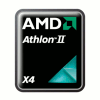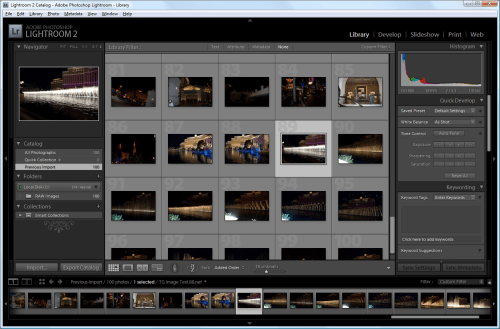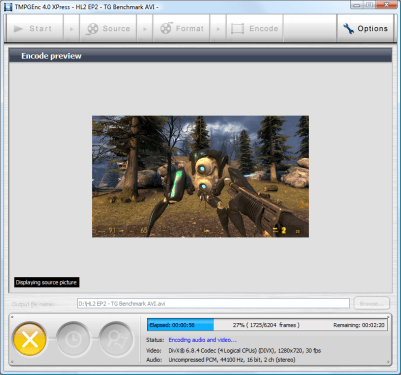- Qualcomm Launches Snapdragon 4 Gen 2 Mobile Platform
- AMD Launches Ryzen PRO 7000 Series Mobile & Desktop Platform
- Intel Launches Sleek Single-Slot Arc Pro A60 Workstation Graphics Card
- NVIDIA Announces Latest Ada Lovelace Additions: GeForce RTX 4060 Ti & RTX 4060
- Maxon Redshift With AMD Radeon GPU Rendering Support Now Available
AMD Athlon II X4 620 – Quad-Core at $99

Last month, AMD became the first company to bring a $99 quad-core processor to market, the Athlon II X4 620. The question, of course, is whether or not it delivers. At 2.60GHz, it looks to offer ample performance, but the lack of an L3 cache is sure to be seen in some of our tests. Luckily, the chip’s overclocking-ability helps negate that issue.
Page 4 – Multi-Media: Adobe Lightroom, TMPGEnc Xpress
Photo manipulation benchmarks are more relevant than ever, given the proliferation of high-end digital photography hardware. For this benchmark, we test the system’s handling of RAW photo data using Adobe Lightroom, an excellent RAW photo editor and organizer that’s easy to use and looks fantastic.
For our testing, we take 100 RAW files (in Nikon’s .NEF file format) which have a 10-megapixel resolution, and export them as JPEG files in 1000×669 resolution, similar to most of the photos we use here on the website. Such a result could also be easily distributed online or saved as a low-resolution backup. This test involves not only scaling of the image itself, but encoding in a different image format. The test is timed indirectly using a stopwatch, and times are accurate to within +/- 0.25 seconds.

With the above chart, it becomes fairly clear that the 3D rendering tests on the previous page don’t make much use of an L3 cache, because as soon as a scenario is introduced which can, the results begin to work against the X4 620. But to be fair, nothing else comes close to the price of the X4 620, either (the Pentium E5200 is about $60 and is our only other sub-$100 chip).
TMPGEnc Xpress 4.5
When it comes to video transcoding, one of the best offerings on the market is TMPGEnc Xpress. Although a bit pricey, the software offers an incredible amount of flexibility and customization, not to mention superb format support. From the get go, you can output to DivX, DVD, Video-CD, Super Video-CD, HDV, QuickTime, MPEG, and more. It even goes as far as to include support for Blu-ray video!
There are a few reasons why we choose to use TMPGEnc for our tests. The first relates to the reasons laid out above. The sheer ease of use and flexibility is appreciated. Beyond that, the application does us a huge favor by tracking the encoding time, so that we can actually look away while an encode is taking place and not be afraid that we’ll miss the final encoding time. Believe it or not, not all transcoding applications work like this.
For our test, we take a 0.99GB high-quality DivX H.264 AVI video of Half-Life 2: Episode Two gameplay with stereo audio and transcode it to the same resolution of 720p (1280×720), but lower the bit rate in order to attain a modest file size. This test also utilizes the SSE instruction sets, either SSE2 or SSE4, depending on what the chip supports.

The lack of L3 cache becomes apparent again, as both the X4 620 and X3 720 just about come out even in their performance. The triple-core chip still comes out on top, though, thanks in part to its higher clock speed.
Support our efforts! With ad revenue at an all-time low for written websites, we're relying more than ever on reader support to help us continue putting so much effort into this type of content. You can support us by becoming a Patron, or by using our Amazon shopping affiliate links listed through our articles. Thanks for your support!







